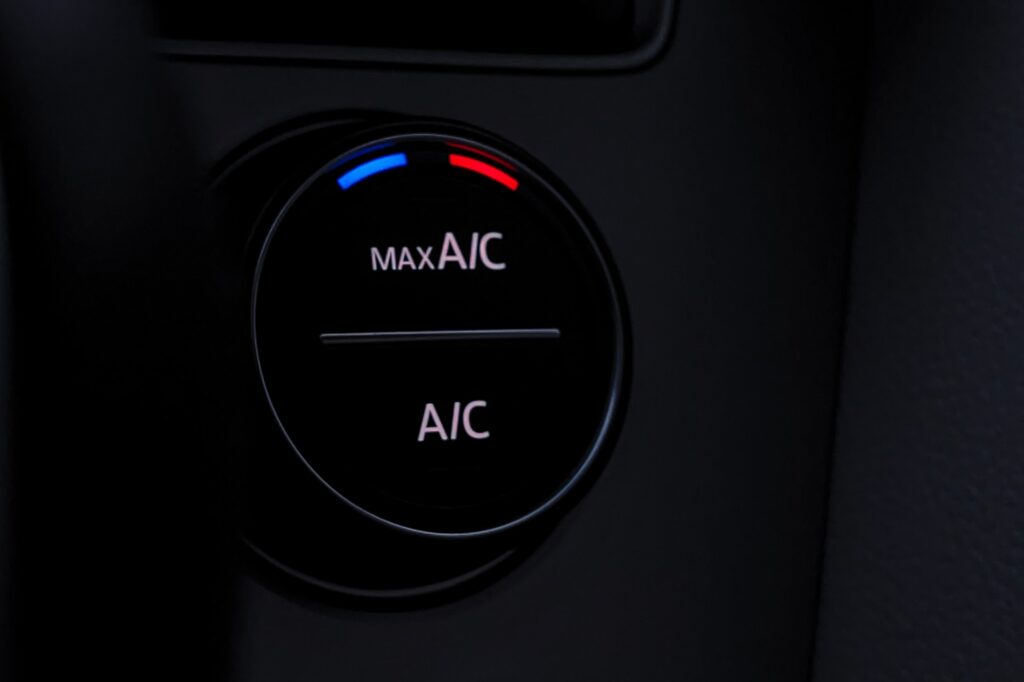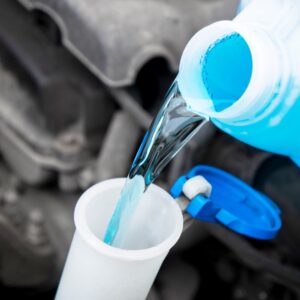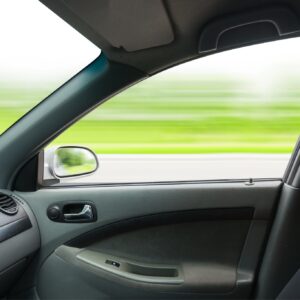A fogged-up windshield may contribute to poor visibility of the road. This can cause serious accidents, especially at night when it’s naturally more difficult to see. Therefore, it’s important to understand why this happens and learn how you can defog your windshield.
What Causes Windshields to Fog?
Fogging on windshields occurs because of the temperature difference between indoor and outdoor air. This may be caused by humidity, condensation, and surface tension.
On one hand, putting your heater on high during cold weather may result in fog forming inside your windshield. On the other hand, blasting the air conditioning system during warmer months may cause your windshield to fog up on the outside.
On most newer vehicles, the compressor is energized by default on defrost or heat for this reason (fogging inside the windshield). Older cars might not have this feature, or the A/C may be inoperative. Some newer vehicles will automatically select “recirc” and energize the A/C when they detect high humidity.
High Humidity
Fogging occurs when the warm outside air reaches dew point as it touches the cool windshield.
The dew point is the temperature at which the air needs to be cooled to achieve relative humidity. When this happens, the air cannot hold more water in the gas form, which results in fogging. As for the air around us, when the temperature and the dewpoint come together, you have fog in the air.
This is also part of the reason why fogging is more common when there’s more than one person in the vehicle. Breathing humid air means exhaling it as well, which causes the fogging.
Condensation
Condensation is the process wherein water vapor becomes liquid. It usually occurs when air is cooled to its dew point or when it becomes saturated with water vapor to the point where air can’t hold any more water.
Condensation is the reason why fogging often happens early in the morning. The cold morning air cools down the windshield while the warm air inside the cabin causes condensation.
Heat In the Vehicle Cabin
Your windshield is more likely to fog up when it’s warm inside the vehicle cabin. There is more moisture held in warm air than cold air. There’s also more space between the molecules in warm air, so more water molecules can fit between them. This may cause condensation inside the vehicle.
Water Surface Tension
Surface tension describes the attraction of water molecules with one another. Think of it like an invisible skin on the surface of a liquid that helps the molecules stick together.
Fog may appear on your windshield’s surface because the water molecules are more attracted to each other rather than the cold glass surface.
Some windshield spray cleaners are formulated to lower water’s surface tension on the glass surface by introducing a substance between the water molecules to prevent droplets from forming. This allows water to spread evenly across the surface.
How to Defog the Windshield

There are different ways to defog the windshield, depending on what’s causing it. Here are some tips and tricks you can try at home.
When It’s Hot
Here’s how you can defog your windshield when the weather is hot.
Use the Windshield Wipers
The easiest way to remove fogging on the glass surface is to use your windshield wipers to remove the condensation and balance out the temperature. Don’t use any type of cloth or fabric that could leave streaks on your windshield.
Use Your A/C Wisely
During the hotter months of the year, it’s important to prioritize cooling the interior and reducing humidity inside your vehicle. Using the A/C and turning the recirculation function on can help the system regulate the temperature inside the vehicle cabin as fast as possible.
When It’s Cold
Now that you know why your windshield fogs up on the inside during cold weather, here are some ways to prevent it.
Turn the Heater On
Turning the heater on helps remove fog because the hot air collects moisture. It also keeps the interior and the windshield warm.
Turn the A/C On
While it sounds counterintuitive, turning the air conditioning on will remove fogging during cold weather because the A/C coils reduce the moisture in the air, resulting in less fog. Don’t blast the A/C to its maximum power to ensure you remain warm. You can also adjust the air temperature with the controls to warm the de-humidified air.
Turn Off Recirculation
As mentioned above, turning off the recirculation allows you to balance the temperature in the cabin and outside the car by letting colder and drier air inside.
Note, however, that this is totally dependent on the ambient humidity. If the air outside isn’t drier, you could make the problem worse. There’s a reason why many newer cars automatically select “recirc” when the humidity is high. Under these circumstances, it’s best not to roll the windows down
Open the Windows
Lastly, opening the windows lets out the humid cabin air while allowing drier outside air to come in. This balances the temperature between the inside and outside of your vehicle, which should remove the fog.
DIY Solutions
Anti-fog solutions are formulated to clear fogging on glass surfaces. They are convenient to use, as you’ll only need to spray them on the surface.
If you prefer to use household products, you may follow the steps below:
- Step 1: Mix water and vinegar or water and dish soap.
- Step 2: Transfer to a spray bottle.
- Step 3: Spray the solution on the windshield and use the wipers to clear the fog. If the fog forms on the inside of the windshield, spray the solution and let it sit.
How to Prevent the Windshield From Fogging
You can prevent the windshield from fogging up by keeping it clean. This is because a dirtier windshield makes it easier for condensation to form on the surface. It’s due to dust particles making it easier for moisture in the air to hang on.
It’s recommended to use a glass cleaner made for cars to fully clean the windshield since these are specifically formulated for use on vehicles. If you plan to use the cleaner on tinted windows, ensure it’s ammonia-free to prevent damage or fading.
Where to Get a Replacement Windshield for Your Vehicle
If your windshield is slightly cracked, you could be staring at a problem bigger than fogging. Driving with a damaged windshield is dangerous and could even pose legal issues. Thankfully, CarParts.com has an array of high-quality windshields for you to choose from.
Our user-friendly website lets you find and order a replacement windshield on your mobile device or computer anytime. Use our vehicle selector to view parts that fit your ride. You can also shop for products according to your preferred brand, price, and features using our search filters.
Order a replacement windshield now, and we’ll deliver your order straight to your doorstep in as fast as two business days.
Get the best deals on windshields today!
Any information provided on this Website is for informational purposes only and is not intended to replace consultation with a professional mechanic. The accuracy and timeliness of the information may change from the time of publication.




































